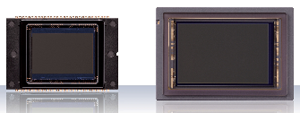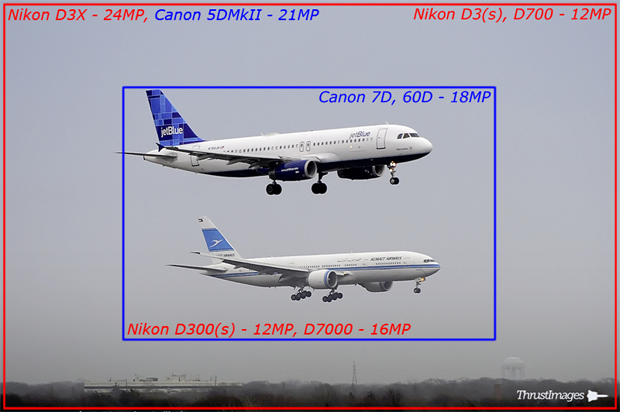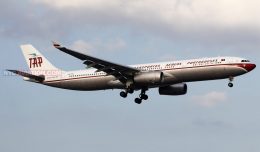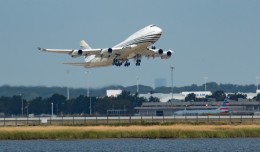Ever since digital cameras began using the term megapixel, the meaning of the phrase “bigger is better” has taken on a whole new meaning. Practically every new camera release from almost every known manufacturer comes with a brand new sensor typically with more megapixels.
That sensor represents the function that was provided by film in the past. To make the discussion simpler, I will only talk about digital SLR cameras and sensors.

Crop sensor next to Full Frame sensor (Images courtesy of Nikon Imaging)
Modern dSLRs have an imaging sensor that is roughly the same size or smaller than the area that was exposed on film in a 35mm film camera. The image area was a rectangle 36mm wide by 24mm tall. However the term 35mm was used to define the format because the film itself was 35mm wide. For all further discussion, a full frame sensor is one that takes up the full area of 36mm x 24mm.
The sensor itself is typically smaller than the full frame with more and more manufacturers releasing full frame sensors in recent years. However, the vast majority of the models from most manufacturers are of the crop sensor type. Crop sensors are basically just smaller sized sensors than the full frame. The common sizes are 1.5x smaller, 1.6x smaller and 2x smaller than a full frame (1.0x) sensor.

Close-up of individual pixels on a digital sensor (Image courtesy of Kodak)
What is a megapixel then? It is an easy way to describe how many individual light detectors there are on the imaging sensor in the back of the camera. Essentially it describes a million pixels. A pixel is the component part of the sensor. Each pixel collects light projected on to it by the lens. They are arranged in rows and columns and together they form an image. So the quantity that fits in a given space is measured by how many per row and column and then the total number makes up the megapixel count. For example, a Canon 7D has a crop sensor measuring 22mm x 15mm (1.6x smaller than a full frame sensor) with approximately 18 million pixels. In contrast, the Nikon D700 has a full frame sensor measuring 36mm x 24mm with approximately 12 million pixels.
Megapixels vs. Sensor Size
The size of the sensor does not directly define the pixel count or megapixels in a sensor. The two numbers should be considered separately. However, most photographers feel that sensor size is directly related to megapixels. Physics aside, the size of the sensor does not dictate how many megapixels the sensor can and does have. There are theoretical limits to how many pixels can be crammed into a particular piece of silicon, but if history has taught us anything it is that technology does not like limitations. Manufacturers continue to put greater and greater numbers of pixels into the limited space of the 35mm format.
How Size Matters
One aspect where size matters is in the quality of those pixels. Better yet, let’s describe it as the quality of the resulting image from such pixels. Another term used to describe the pixels in a digital sensor is a light collecting bucket. This seems to be more appropriate as the sensor element itself (the pixel) is actually a tiny little bucket that collects photons of light projected onto it by the lens. The size of these buckets makes a real world difference in the quality of the resulting image. A larger bucket collects more photons and thereby gives the camera electronics more electrical data to form more realistic images. Even with the best and most advanced electronics in modern cameras, the size of the pixels means better images. However this is mostly realized when the light gets really low and there are fewer and fewer photons to collect. In the dark, a full frame camera sensor with larger sized pixels will produce beautiful low noise images. The same is not true for a crop sensor with the same amount of pixels because the pixels are smaller. The latest cameras from the top manufacturers have introduced technology that extracts far more quality from small sensors, but they still can’t compete with size.
Here is a good representation of how the same 12 million pixels are distributed on a small crop sensor and a full frame sensor. The resulting image is going to be exactly 12 megapixels in size but the image will look different and the resolution of the resulting image will also be different as shown. The crop sensor camera will use all 12 megapixels for the center of importance in the image; the aircraft, whereas the Full frame sensor camera has to discard valuable image data when cropping to achieve a similar angle of view.

In The Real World
To illustrate the differences graphically, take a look at the following diagram:

Note how many pixels are concentrated on the scene central area. The above illustration is a good example of what a full frame and a crop sensor camera see from the same exact position using the same exact lens. For the full frame sensor to place more pixels on the same area as the crop sensor it would need a focal length at least 1.5x larger and still not put as many pixels on the scene as the other sensor. This is the real benefit to a crop sensor vs a full frame sensor when it comes to aviation photography in general.
The benefits of a full frame sensor come to light when you need to maintain a specific distance and capture a wider field of view. As you can see, the full frame sensor captures a far wider field of view. The other benefit is low light performance as mentioned above. If you’re shooting in low light, there is little choice but to use a full frame sensor camera with the largest possible pixels (or buckets). The Nikon D3s, in my opinion, currently enjoys the highest quality sensor and electronics of any 35mm dSLR today producing the cleanest images at the highest possible ISO sensitivities. It is a great example of large pixels in small quantities. This, however, is rarely a necessity when shooting in full daylight as most aviation photography is done.
Field of View vs. Subject Distance
Note in the above example how the field of view does not change at all. This is why it is a misconception to think that a crop sensor camera actually gives you more reach or is somehow magnifying the scene. The illustration clearly shows how the lens is projecting the same exact image on the sensors. The difference is that the crop sensor has more megapixels on the important part of the image. That is the real difference. All other aspects from a photographic point of view remain exactly the same. The most important thing to keep in mind is your angle of view. That is determined only by the subject distance. It does not matter if I use a wide angle lens or a telephoto lens, the field of view will not change. The image may look smaller or larger, but if magnified to the same visible dimensions, they will look identical, sans the quality.
What to Choose

Canon EOS 7D
This is a tough question to answer. The decision can be made easily by defining the type of images you wish to achieve. In the end, it is my opinion that for 99% of the images commonly sought in aviation photography, a modern high megapixel crop sensor camera is the one to choose. There are a few exceptions such as the Nikon D3X and Sony Alpha 900 with 24MP and the Canon 5D Mk II and 1Ds Mark III at 21MP. These are still no match in pixel density to the current Canon 18MP crop sensor cameras such as the 7D and 60D and the Nikon D300s at 12MP and D7000 with 16MP.
Unless you need the low light capabilities of the full frame counterparts, there is little benefit for typical aviation photography where you want more pixels concentrated in the center of the frame. This results in a smaller and lighter camera / lens combination. On the downside, a crop sensor with a somewhat limited zoom lens range, can become too much if suddenly you are too close to the action and a very large Airbus A340-600 comes into view and your camera/lens combination is not wide enough to capture the full length of this very long aircraft. However this is generally not of much concern given most spotting locations are far away from the action.

Nikon D300s
Be aware that some cameras with denser sensors (those with super high MP counts in a small sensor such as the Canon 7D have been known to produce noisier images even at the lowest ISO settings. This is usually not a problem for most photographers and can easily be corrected with post processing noise reduction software.
Your decision should also take into consideration not just the sensor size and density but also the ergonomics of the camera, the controls and features as well as frame rate, buffer size and manual controls, all of which make a difference where it counts: Real world ability to capture the image you envision when you press the shutter.







